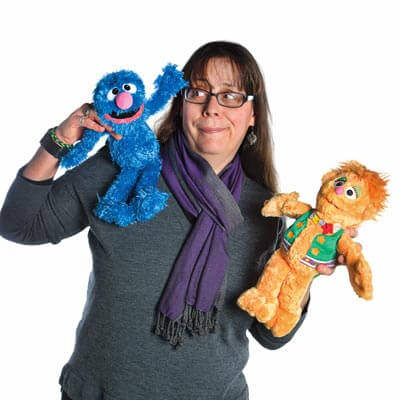- August 07, 2019
- By Kelly Blake
For 50 years, “Sesame Street” has been a part of early education in the United States, and the show’s positive impact on kids’ development is well-documented. Now, new research indicates that “Sesame Street’s” effect can carry over to other countries and cultures.
A study led by University of Maryland School of Public Health Professor Dina Borzekowski found that “Galli Galli Sim Sim,” the Hindi language adaptation in India, was linked to gains in literacy and numeracy among young children, as well as advances in social and emotional skills and identifying healthy foods.
 “I am a proponent of using educational media to reach vulnerable populations,” Borzekowski said. “Through our study, we provide solid evidence that a well-designed television show can improve child development on many fronts.”
“I am a proponent of using educational media to reach vulnerable populations,” Borzekowski said. “Through our study, we provide solid evidence that a well-designed television show can improve child development on many fronts.”
This study, published today in the Journal of Applied Developmental Psychology, is the largest randomized controlled study conducted in a low- or middle-income country to rigorously assess the impact of an educational television show on child development.
A sample of 1,304 children from ninety-nine preschools in Lucknow, India, was divided into three groups: A high-exposure group watched “Galli Galli Sim Sim” five days a week for 12 weeks, the low-exposure group watched the show twice a week along with other programming, and the control group watched only popular TV programming available to Indian children, like “Tom & Jerry” and “Chhota Bheem.”
The research team asked children to name “Galli Galli Sim Sim” characters from a card containing images of 16 characters, including Chamki, the loveable girl Muppet with a flair for language, and Googly, the big blue monster who is sometimes shy. This led to the innovative measure of “receptivity,” which captures exposure and recall while controlling for how proficient a child is at remembering media content.
“Our team members sat on the ground next to each boy or girl, and carefully recorded what vocabulary he or she knew, what actions the child would take if in a tough situation, or if guava was a 'sometimes' or an 'anytime' food,” said Deepti Mehrotra, the in-country project manager, who led a team of 30 trained professionals for around a year.
The research team found that the children with the most receptivity to “GaIli Galli Sim Sim” were scoring 16% higher on recognizing Hindi letters, 23% higher on naming shapes and 11% higher on identifying good behavioral strategies.
Borzekowski was especially encouraged by the improvements in “socio-emotional” strategies. “Galli Galli Sim Sim,” which premiered in 2006, recently added content on sensitive issues like bullying, conflict resolution, “good touch/bad touch,” jealousy and even what to do if you get lost in the market.
“Those with higher receptivity scores were more able to name effective ways to resolve difficult but also typical situations,” Borzekowski said.
Topics
ResearchUnits
School of Public Health